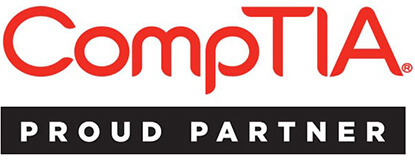Key Pressure Points to Relax and Ease Tension
Massages may be one of the best activities for relaxation and stress relief. Unfortunately, we sometimes don’t have the time for a massage when we need it most. That’s where pressure points come in. If you know how to use them, you can give yourself a calming stress-relief session in minutes. It may not be as luxurious as visiting a licensed Massage Therapist, but you can massage your own pressure points anytime, anywhere.
What are Pressure Points?
Pressure point stimulation, or acupressure, has been used for thousands of years in Asian medicine as a treatment for a wide variety of ailments. Chinese medical theory suggests that each pressure point is associated with the health of a specific organ in the body, though this claim is disputed by some Western practitioners.
Most massage therapists and physicians agree that pressure point stimulation can lead to reduced muscle tension, improved circulation and stimulation of endorphins (feel-good hormones).
Where are Pressure Points Located?
Head
Do you ever get headaches? Massaging your temples can be a simple way to get fast relief without medicine. Your temples are the flat parts of your skull located between your eyes and ears. Just apply pressure with your fingers and work them in a circular motion for several minutes. Soon, you’ll begin to feel at ease and your headache may disappear.
Neck
Your neck can also hold a lot of tension, especially if work or school requires you to use a computer all day. Massage your neck’s pressure points by simultaneously pressing your fingers on either side of the muscles surrounding your upper spine. Work your way up and down the neck for several minutes. Avoid putting pressure directly on the spine.
Hand
Tension can be held in some surprising places—even your hands. Another pressure point can be found in the upper part of the web between your thumb and index fingers. Apply firm pressure and massage the area for 5 seconds, repeating as many times as you like. Don’t forget to work the pressure points on both of your hands.
Back
The pressure points on your back are easiest to massage with the help of a friend, but it is possible to reach some of them yourself. The muscles along your spine contain pressure points from the top of your neck to the bottom of your back. Just as you would with your neck, massage both sides of the spine’s surrounding muscle, without applying pressure to the spine itself. Move up and down the back slowly and evenly.
Foot
Many of us spend all day on our feet, so it makes sense that we would hold a lot of tension in them. It feels great to ease some of that tightness with a few minutes of pressure point stimulation. Just behind the ball of your foot (the large round part behind your big toe), you’ll find a pressure point. Gently massage it to alleviate foot pain or tension. You can also apply pressure to the bottom of your heel and below each of your toes for another relaxing sensation.
Make a Career Out of Helping People Relax
Pressure points are just one aspect of the greater field of Massage Therapy. If you enjoy learning about the human body and the way it works, you might consider a career as a licensed Massage Therapist. These professionals are taught how to help people relax, ease tension and reduce pain through therapeutic touch.
IBMC College offers a Therapeutic Massage diploma that can be completed in as little as 10 months. In addition to courses taught by experienced licensed Massage Therapists, students also gain hands-on training by working in the college’s professional Massage Clinics. Learn more about the Massage Therapy program, or call 800-495-2669 to learn more about IBMC College’s campuses in Fort Collins, Greeley and Longmont, Colorado.

